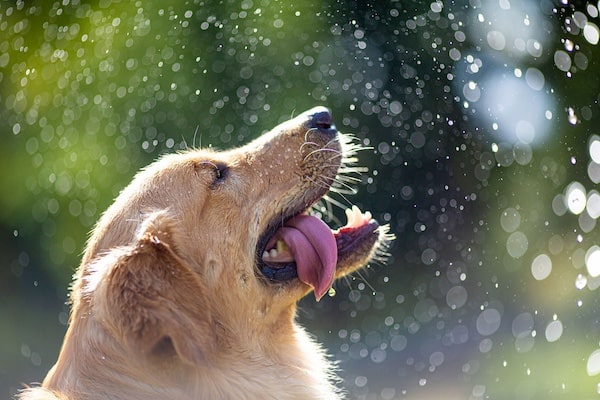Proper nutrition is the cornerstone of a healthy life for dogs, just as it is for humans. A balanced diet for dogs typically includes a mix of proteins, fats, carbohydrates, vitamins, minerals, and water. These nutrients support various bodily functions, contributing to energy levels, muscle growth and repair, immune system strength, and overall health.
However, just like people, dogs can have varying nutritional needs based on their age, size, breed, and health status.
- Emergence of Grain-Free Dog Food
- Purpose of the Guide
- Understanding Grain-Free Dog Food
- Nutritional Benefits of Grain-Free Dog Food
- Specific Needs Addressed by Grain-Free Diets
- Considerations When Choosing Grain-Free Dog Food
- Debates and Controversies Surrounding Grain-Free Diets
- Transitioning to Grain-Free Dog Food
- Frequently Asked Questions (FAQs)
- Conclusion
Emergence of Grain-Free Dog Food
In recent years, grain-free dog food has gained popularity among pet owners. Initially developed in response to concerns about potential allergies and sensitivities to grains like wheat, corn, and soy in some dogs, grain-free dog food substitutes grains with alternative sources of carbohydrates. These alternatives often include legumes, potatoes, and sweet potatoes, aiming to provide more protein-rich diets and potentially alleviate digestive issues and allergic reactions.
The debate over grain-free versus traditional dog food is ongoing, with strong opinions on both sides. Proponents of grain-free diets often cite improved coat condition, reduced skin problems, and better overall health in dogs sensitive to grains. Critics, however, point to the lack of scientific evidence proving the superiority of grain-free diets for the general dog population and raise concerns about potential health risks.
Purpose of the Guide
This guide is designed to navigate the complex topic of grain-free dog food. We aim to provide dog owners with a comprehensive overview of the potential benefits and considerations of grain-free diets. By exploring nutritional benefits, addressing specific canine needs, and examining the debates surrounding grain-free food, we hope to offer valuable insights to help you make informed decisions about your dog’s diet.
We’ll also discuss how to transition your dog to a grain-free diet, should you choose to do so, and provide answers to frequently asked questions. Our goal is to arm you with the knowledge needed to discuss your dog’s nutritional needs with your veterinarian and decide whether a grain-free diet is right for your furry friend.
In the following sections, we’ll delve into what grain-free dog food is, its benefits, considerations, and much more.
Understanding Grain-Free Dog Food
As pet owners increasingly focus on providing the best care for their furry companions, the diet we choose plays a crucial role in maintaining their health and happiness. Grain-free dog food has emerged as a popular alternative to traditional diets, but understanding what sets it apart is essential for making an informed choice.
What is Grain-Free Dog Food?
Grain-free dog food is exactly what it sounds like: dog food that does not contain grains such as wheat, corn, rice, barley, oats, and soy. These grains have traditionally been used in dog food as a source of carbohydrates. The grain-free alternative focuses on removing these, often replacing them with other carbohydrate sources like potatoes, peas, lentils, or sweet potatoes. The idea is to offer a diet that is closer to what dogs’ ancestors would have eaten, with a higher protein content and fewer carbohydrates.
Ingredients Commonly Used in Grain-Free Dog Foods
Grain-free dog foods often boast a higher percentage of protein sources, including meats like chicken, beef, fish, and lamb. They also include a variety of vegetables and fruits to provide essential vitamins, minerals, and antioxidants. Common non-grain carbohydrates in these foods include:
- Sweet Potatoes and Potatoes: High in fiber and vitamins, these serve as the primary carb sources in many grain-free foods.
- Legumes: Peas, lentils, and chickpeas are used not only as carb sources but also contribute to the overall protein content.
- Tapioca: A gluten-free carbohydrate that serves as a binding agent in place of grains.
These ingredients aim to create a well-rounded diet that supports a dog’s nutritional needs without relying on grains.
Grain-Free vs. Traditional Dog Food: Key Differences
The primary difference between grain-free and traditional dog food lies in the carbohydrate source. Traditional dog foods often use grains as an inexpensive and easily accessible source of energy. In contrast, grain-free foods substitute these with alternative carb sources, aiming for a lower carb and higher protein content.
This difference in composition can be beneficial for dogs with specific health concerns:
- Allergies and Sensitivities: Some dogs are allergic or sensitive to grains, leading to skin irritation, digestive issues, and other health problems. Grain-free diets can alleviate these symptoms.
- Digestive Health: Dogs with sensitive stomachs may find grain-free diets easier to digest, thanks to the focus on high-quality protein and alternative carbohydrates.
- Weight Management: With higher protein and potentially lower carbohydrate content, grain-free diets can help maintain a healthy weight in dogs, provided the overall calorie intake is managed.
However, it’s crucial to note that not all dogs require a grain-free diet. Most dogs can digest grains without issues, and grains can be a healthy part of a balanced diet. The choice between grain-free and traditional dog food should be based on your dog’s individual health needs, dietary sensitivities, and preferences, ideally under the guidance of a veterinarian.
In the next section, we’ll dive deeper into the nutritional benefits of grain-free dog food and how it can address specific health needs in dogs.
Nutritional Benefits of Grain-Free Dog Food
The transition to grain-free dog food for many pet owners is driven by the potential nutritional benefits these diets can offer. Here, we delve into the advantages of grain-free formulas, highlighting how they can contribute to a healthier, more vibrant life for dogs.

Enhanced Protein Content
One of the hallmark features of grain-free dog food is its elevated protein content. By focusing on meat-based ingredients over grains, these foods aim to align more closely with the carnivorous aspect of a dog’s natural diet. High-quality animal proteins are essential for building and maintaining muscle mass, supporting healthy skin and coat, and ensuring the proper function of all bodily systems.
Grain-free diets often feature a variety of meats, such as chicken, beef, lamb, fish, and turkey, providing a broad spectrum of amino acids that are vital for a dog’s health. This higher protein content can be especially beneficial for active dogs, puppies in their growth phase, and breeds with higher muscle mass, aiding in their development and energy levels.
Allergies and Sensitivities to Grains
Some dogs develop allergies or sensitivities to specific grains, which can lead to a range of health issues, including skin irritations, gastrointestinal upset, and chronic discomfort. Symptoms of grain allergies in dogs might include itchiness, excessive licking, vomiting, diarrhea, and ear infections.
Grain-free dog foods eliminate common allergens found in wheat, corn, and soy, offering a viable dietary alternative for sensitive dogs. By switching to a grain-free diet, pet owners may notice a reduction or elimination of allergic symptoms, leading to a more comfortable and happy life for their dogs.
Digestibility and Gastrointestinal Health
Grain-free dog foods are often praised for their digestibility. The high protein content and the use of alternative carbohydrate sources like sweet potatoes and legumes can be easier on a dog’s digestive system, particularly for those with sensitivities to grains. Improved digestibility means more efficient nutrient absorption and healthier stools.
Furthermore, the inclusion of fibrous vegetables and fruits supports gastrointestinal health, promoting regular bowel movements and aiding in the maintenance of a healthy gut flora. A well-functioning digestive system is crucial for the overall health and well-being of dogs, contributing to a strong immune system and reducing the risk of chronic diseases.
Energy and Metabolism
The nutritional composition of grain-free dog food can also positively affect a dog’s energy levels and metabolism. Higher in protein and fats, these diets provide a more concentrated source of energy that is ideal for active dogs and can help maintain steady energy levels throughout the day.
Moreover, the careful balance of nutrients in grain-free formulas can support a healthy metabolism, aiding in weight management and the prevention of obesity. By providing energy from protein and fat rather than high carbohydrate content, grain-free dog foods can help maintain lean muscle mass while preventing excessive weight gain.
In summary, grain-free dog food offers a range of nutritional benefits that can cater to the specific needs of individual dogs, especially those with grain allergies or sensitivities, digestive issues, and high energy demands. However, it’s important to choose a grain-free diet that is well-balanced and suited to your dog’s age, size, and health status, ideally with the guidance of a veterinarian.
Specific Needs Addressed by Grain-Free Diets
Grain-free dog foods are formulated not just as a general dietary option but to address specific health needs and conditions. Here’s how these diets cater to the nuanced requirements of dogs at various life stages and with particular health concerns.
Dogs with Specific Allergies or Intolerances
Grain allergies in dogs, while not as common as some may believe, do exist. Symptoms can range from skin irritation and ear infections to gastrointestinal upset. For dogs genuinely diagnosed with allergies or intolerances to grains such as wheat, corn, or soy, grain-free diets offer a significant relief. These diets eliminate the common allergenic triggers, replacing them with alternative, easily digestible carbohydrate sources, thus potentially alleviating allergic symptoms and enhancing the dog’s overall well-being.
Weight Management and Obesity Prevention
Grain-free diets can play a role in weight management and the prevention of obesity in dogs. By offering higher levels of protein and fat, and often fewer carbohydrates, these diets can help maintain a lean body mass while providing ample energy. For dogs prone to weight gain or those leading less active lifestyles, the caloric density and nutritional balance of grain-free foods should be carefully considered. Portion control and regular veterinary check-ups are essential to ensure that a grain-free diet supports a healthy weight and body condition.
Impact on Skin and Coat Health
The high-quality proteins and fats typically found in grain-free dog foods are crucial for maintaining healthy skin and a glossy coat. Omega-3 and omega-6 fatty acids, often more abundant in grain-free formulas due to the inclusion of fish and flaxseed oils, support skin health and contribute to a shiny, healthy coat. Dogs suffering from dull coats or itchy, flaky skin may benefit from the switch to a grain-free diet, as long as it’s part of a balanced nutritional plan.
Suitability for Different Life Stages (Puppies, Adults, Seniors)
Grain-free dog food can be formulated to suit all life stages, from puppies to seniors, addressing the changing nutritional needs as dogs age.
- Puppies: They require diets rich in protein and fat to support their rapid growth and development. Grain-free foods designed for puppies often have a higher nutrient density, providing the essential building blocks for strong bones, muscles, and cognitive development.
- Adult Dogs: For the adult dog, grain-free diets maintain muscle mass, support energy needs, and prevent weight gain through balanced nutrition.
- Senior Dogs: Aging dogs benefit from diets that support joint health, maintain muscle mass despite lower activity levels, and address age-related issues. Grain-free foods for seniors can provide higher levels of specific nutrients, such as omega-3 fatty acids for joint health and antioxidants for cognitive function.
Choosing the right grain-free diet requires understanding your dog’s specific nutritional needs at their current life stage, along with any health issues or dietary sensitivities they may have. Consultation with a veterinarian can help tailor dietary choices to support your dog’s healthiest and happiest life.
Next, we’ll explore important considerations for pet owners when selecting a grain-free diet, ensuring it meets all the nutritional needs of their canine companions.
Considerations When Choosing Grain-Free Dog Food
While grain-free dog food can be a beneficial dietary choice for certain dogs, selecting the right product requires careful consideration. Understanding the composition of dog food, the role of carbohydrates, and the importance of a balanced diet is crucial. Here are key considerations to keep in mind.
Understanding Dog Food Labels and Ingredients
Reading and understanding dog food labels is the first step in choosing the right grain-free option for your pet. Here’s what to look for:
- Ingredient List: Ingredients are listed by weight. Look for high-quality protein sources (like whole meats or meat meals) as the first listed ingredients.
- Guaranteed Analysis: This section provides the minimum percentages of crude protein and fat, and the maximum percentages of crude fiber and moisture. Higher protein and moderate fat levels are typically seen in grain-free foods.
- Nutritional Adequacy Statement: This statement tells you if the food is complete and balanced for a specific life stage (puppy, adult, senior) as defined by the AAFCO (Association of American Feed Control Officials).
The Role of Carbohydrates in Dog Food and Alternative Sources
While dogs don’t require carbohydrates in large quantities, they can be an important energy source. Grain-free foods often use alternative carbohydrates such as sweet potatoes, peas, and lentils, which can provide energy as well as fiber, vitamins, and minerals. However, it’s essential to monitor the types and amounts of these alternatives, as excessive legumes and potatoes have been scrutinized for their association with certain health issues in dogs.
Balancing the Diet: What Else to Look for Beyond Being Grain-Free
A grain-free label doesn’t automatically make a dog food superior. It’s important to ensure the food offers a balanced diet, including:
- Adequate Protein: High-quality, easily digestible protein sources should be at the forefront of the ingredients list.
- Fats and Fatty Acids: Essential for energy, skin, and coat health. Look for foods containing omega-3 and omega-6 fatty acids.
- Vitamins and Minerals: Necessary for various bodily functions. Vegetables and fruits in the ingredient list can be good sources.
- Fiber: Important for digestive health. Sources include vegetables and fruits.
The Importance of Veterinary Guidance
Perhaps the most crucial consideration is seeking veterinary advice. A veterinarian can help determine if your dog could benefit from a grain-free diet based on their health history, breed, and lifestyle. They can also recommend specific brands or formulations that would be most beneficial for your dog’s unique needs.
Veterinarians can also provide guidance on portion sizes and frequency of feeding, which can vary greatly depending on the dog’s size, age, and activity level. Regular check-ups can help monitor your dog’s health and adjust their diet as needed.
Choosing the right grain-free dog food involves more than just opting out of grains; it’s about finding a well-rounded, nutritionally complete diet that supports your dog’s health and vitality. With careful consideration and professional guidance, you can make an informed decision that promotes the well-being of your furry friend.
Debates and Controversies Surrounding Grain-Free Diets
The rise in popularity of grain-free dog food has sparked significant debate and controversy within the pet nutrition community. At the heart of these discussions are concerns over nutritional completeness, potential health risks, and varying professional opinions. Understanding these complexities is essential for pet owners navigating the decision-making process regarding their dog’s diet.
Nutritional Completeness and Balance
One major concern with grain-free diets is whether they provide a nutritionally complete and balanced diet for all dogs. Critics argue that some grain-free foods might lack certain essential nutrients found in grains, such as fiber, vitamins, and minerals, which are important for overall health. Proponents of grain-free diets, however, contend that these nutrients can be adequately sourced from non-grain ingredients, ensuring a balanced diet if formulated correctly.
The key to nutritional balance lies in the formulation and ensuring that the diet meets the dog’s specific needs, rather than simply excluding grains. Each dog’s nutritional requirements can vary widely based on factors such as age, breed, activity level, and health status, making it important to choose a diet that is tailored to the individual dog.
The FDA Investigation into Grain-Free Diets and Canine Heart Disease
In July 2018, the U.S. Food and Drug Administration (FDA) announced an investigation into reports of canine dilated cardiomyopathy (DCM) in dogs eating certain pet foods, many labeled as grain-free. DCM is a disease that affects the heart muscle, leading to decreased heart function. While it is recognized that some breeds have a genetic predisposition to DCM, the cases reported included breeds not typically prone to the disease.
The investigation focused on the potential connection between diet and DCM, particularly the role of legumes and potatoes as primary ingredients instead of grains. As of my last update, the FDA had not found a direct link between grain-free diets and DCM, but the investigation has encouraged ongoing research and discussion about the impact of diet on canine heart health.
Perspectives from Veterinary Nutritionists
Veterinary nutritionists offer diverse perspectives on grain-free diets. Some caution against the trend, suggesting that without a specific medical reason (like a diagnosed grain allergy), there’s no proven benefit to switching a dog to a grain-free diet. Others acknowledge that grain-free options can meet the nutritional needs of dogs if carefully formulated and chosen to match the dog’s specific requirements.
A common recommendation from nutritionists is the importance of selecting diets that have been subjected to rigorous testing and research. They advise looking for foods that meet AAFCO (Association of American Feed Control Officials) guidelines for nutritional adequacy and have undergone feeding trials to ensure they meet the nutritional needs of dogs throughout different life stages.
The debate over grain-free dog food underscores the importance of basing dietary decisions on sound scientific evidence, individual health needs, and professional guidance. While grain-free diets can be a healthy choice for some dogs, they are not universally the best option. Ongoing research and open discussions between pet owners and veterinary professionals are key to ensuring the health and well-being of dogs, regardless of diet choice.
Transitioning to Grain-Free Dog Food

Switching your dog to a grain-free diet, like any change in diet, should be approached with care to ensure it’s a smooth and safe transition for your pet. Here are steps and considerations to keep in mind during the process.
How to Introduce Grain-Free Food into Your Dog’s Diet
- Gradual Transition: Start by mixing a small amount of the grain-free food with your dog’s current food. Gradually increase the proportion of the new food while decreasing the old food over a period of 7-10 days. This gradual change helps your dog’s digestive system adjust without causing gastrointestinal upset.
- Follow the Feeding Guidelines: Initially, follow the feeding guidelines on the grain-free dog food packaging, adjusting based on your dog’s age, weight, and activity level. These guidelines are a starting point and may need further adjustment.
- Observe Your Dog: Pay close attention to your dog’s reaction to the new diet. Look for signs of enjoyment or reluctance when eating, as well as any changes in energy levels or behavior.
Monitoring Your Dog’s Health During the Transition
- Digestive Health: Monitor your dog’s stools for consistency, frequency, and appearance. A healthy transition should not cause long-term diarrhea or constipation. Temporary changes are normal, but persistent issues warrant a consultation with your veterinarian.
- Allergic Reactions: Be on the lookout for signs of allergic reactions or food sensitivities, such as itching, excessive licking, rash, or gastrointestinal symptoms. If you observe any adverse reactions, consult your veterinarian.
- Overall Well-being: Keep an eye on your dog’s overall health, including energy levels, weight, coat condition, and behavior. Any negative changes should prompt a review of the diet with your veterinarian.
Adjusting Portions and Frequency
- Portion Size: Adjust portions based on your dog’s weight management needs. Grain-free foods can be more calorie-dense, and portions may need to be smaller than with grain-inclusive diets.
- Feeding Frequency: Young puppies may require three to four meals a day, while most adult dogs do well with two. Seniors or dogs with specific health conditions may have unique needs. Watch how your dog responds to feeding times and adjust as needed for optimal health and energy.
- Consultation with a Veterinarian: It’s essential to consult with a veterinarian before and during the transition to a grain-free diet, especially if your dog has existing health issues. Your vet can provide personalized advice on diet selection, portion sizes, and monitoring your dog’s health.
Transitioning to a grain-free diet can be a positive change for many dogs, especially when done thoughtfully and under the guidance of a veterinarian. Monitoring your dog’s reaction to the new diet closely will help ensure the transition supports their overall health and well-being.
Frequently Asked Questions (FAQs)
When considering a grain-free diet for your dog, you likely have many questions about its benefits, potential risks, and how it compares to other dietary options. Below, we’ve compiled answers to some of the most commonly asked questions about grain-free dog food. This section aims to address concerns, debunk myths, and provide clarity on this popular dietary trend, helping you make informed decisions for the health and happiness of your furry friend.
Whether grain-free dog food is better for your dog depends on several factors, including your dog’s individual health needs, dietary sensitivities, and nutritional requirements. While grain-free diets can benefit dogs with specific grain allergies or sensitivities, many dogs thrive on high-quality traditional diets that include grains. The best choice depends on your dog’s specific health and nutritional needs, which a veterinarian can help determine.
A well-formulated grain-free diet should not cause nutritional deficiencies. High-quality grain-free dog foods are designed to be nutritionally complete, providing all the necessary vitamins, minerals, proteins, and fats your dog needs. However, it’s essential to choose a diet that meets the AAFCO guidelines for nutritional adequacy and to consult with a veterinarian to ensure the diet fits your dog’s specific needs.
Signs that your dog might be allergic to grains include chronic itching, skin rashes, ear infections, hair loss, and gastrointestinal problems like diarrhea and vomiting. If you suspect a grain allergy, it’s important to consult with a veterinarian. They may recommend an elimination diet to identify the allergen or perform allergy testing.
Whether a dog on a grain-free diet requires supplements depends on the specific formula of the diet and the individual needs of the dog. While high-quality grain-free dog foods are formulated to be nutritionally complete, some dogs might benefit from supplements based on their health status, age, or unique nutritional needs. Common supplements might include omega-3 fatty acids for skin and coat health, probiotics for digestive health, or joint support supplements for older dogs. However, it’s important not to add supplements to your dog’s diet without consulting with a veterinarian. Over-supplementation can lead to health issues, and your vet can provide guidance on what, if any, supplements are necessary for your dog’s optimal health.
Compared to grain-free dog food, which is formulated to be complete and balanced, a raw food diet requires careful planning to ensure nutritional adequacy. Both diet types have their proponents, but the decision should be based on a thorough evaluation of the dog’s health, nutritional needs, and lifestyle, ideally with veterinary guidance.
Yes, you can switch back to a traditional diet if grain-free doesn’t suit your dog, following the same gradual transition process to avoid gastrointestinal upset. Monitor your dog’s health and consult with your veterinarian to choose the most appropriate diet based on your dog’s specific needs and health status.
Conclusion
The exploration of grain-free dog food reveals a dietary option that, while not universally necessary, can offer significant benefits for certain dogs. The potential advantages, including enhanced protein content, alleviation of grain-related allergies and sensitivities, improved digestibility, and positive impacts on energy and metabolism, make it a compelling choice for pet owners seeking to address specific health concerns or dietary preferences.
Recap of the Benefits of Grain-Free Dog Food
Grain-free dog food aims to provide a diet closer to a dog’s ancestral dietary patterns, emphasizing high-quality animal proteins and alternative carbohydrate sources. For dogs with grain allergies or sensitivities, it offers an alternative that can lead to reduced symptoms and improved overall health. The carefully selected ingredients in many grain-free formulas can support better digestibility, healthier skin and coat, weight management, and tailored nutritional needs across different life stages.
Emphasis on the Importance of a Balanced Diet and Veterinary Advice
However, the cornerstone of any dog’s diet should be its nutritional completeness and balance. Grain-free or not, a dog food should meet all of your pet’s dietary needs to ensure their well-being. It’s also essential to recognize that grain-free diets are not inherently superior to traditional diets for all dogs. The choice between grain-free and grain-inclusive diets should be made based on the individual dog’s health, lifestyle, and nutritional needs, ideally under the guidance of a veterinary professional. Veterinary advice is invaluable in navigating the vast array of dietary options and ensuring that your dog receives the nutrition they require for a healthy life.
Final Thoughts and Recommendations
As pet owners, our primary concern is the health and happiness of our pets. The decision to switch to a grain-free diet should be informed by a thorough understanding of your dog’s specific needs and the potential benefits and considerations of such a diet. Remember, dietary changes should always be approached gradually and monitored closely to ensure they agree with your dog’s digestive system and overall health.
Ultimately, the best diet for your dog is one that supports their health and vitality, allowing them to thrive at every stage of life. Whether you choose a grain-free diet or a high-quality traditional diet, the key is to look for foods that are well-formulated, nutritionally balanced, and appropriate for your dog’s unique circumstances. By doing so, and by maintaining an open dialogue with your veterinarian, you can ensure that your beloved pet enjoys the best possible nutrition.
In conclusion, whether grain-free or not, the pursuit of the best diet for our dogs reflects our deep commitment to their well-being and happiness, guiding them towards a long, healthy, and joyful life by our sides.





